Posted on June 21st, 2010 by ASEE
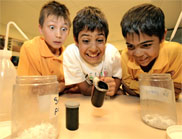 Visit the chemistry activity page from CSIRO — The Commonwealth Scientific and Industrial Research Organisation, Australia’s national science agency — to find simple, fun chemistry and physics projects for students. Other sections of this science Website offer information, videos, links, the Double Helix Science Club, and local resources for Australia teachers.
Visit the chemistry activity page from CSIRO — The Commonwealth Scientific and Industrial Research Organisation, Australia’s national science agency — to find simple, fun chemistry and physics projects for students. Other sections of this science Website offer information, videos, links, the Double Helix Science Club, and local resources for Australia teachers.
Read More
Filed under: Class Activities, Grades 6-8, Grades 9-12, Grades K-5, K-12 Outreach Programs, Web Resources | Comments Off on Class Activities: Chemistry and Physics from CSIRO
Tags: Chemistry, Experiments, Physics
Posted on June 10th, 2010 by ASEE
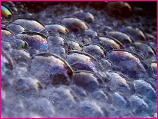 Students grades 4-12 conduct a simple experiment that demonstrates how a familiar chemical — liquid soap — can be used to break the surface tension of water and propel a toy boat. Older students move into further inquiry of chemical dispersants and their use in combating oil spills.
Students grades 4-12 conduct a simple experiment that demonstrates how a familiar chemical — liquid soap — can be used to break the surface tension of water and propel a toy boat. Older students move into further inquiry of chemical dispersants and their use in combating oil spills.
Read More
Filed under: Class Activities, Grades 6-8, Grades 9-12, Grades K-5 | 1 Comment »
Tags: Chemistry, Grades 4-12, Lesson Plan
Posted on June 7th, 2010 by ASEE
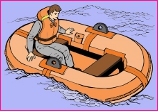 Do your students have what it takes to survive and be rescued? In this activity from Boston’s Museum of Science, student teams practice the design skills of engineers as they create survival tools from a crate of supplied materials. They learn about teamwork, brainstorming, innovation, and creative material reuse in attempting to create a protective shelter, a method for gathering food, and a signal for help. The teams test their designs for feasibility before having a design review with the rest of the class.
Do your students have what it takes to survive and be rescued? In this activity from Boston’s Museum of Science, student teams practice the design skills of engineers as they create survival tools from a crate of supplied materials. They learn about teamwork, brainstorming, innovation, and creative material reuse in attempting to create a protective shelter, a method for gathering food, and a signal for help. The teams test their designs for feasibility before having a design review with the rest of the class.
Read More
Filed under: Class Activities, Grades 6-8, Grades K-5 | 2 Comments »
Tags: Engineering Design Process, Grades 4-10, Lesson Plan
Posted on June 7th, 2010 by ASEE
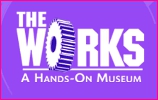 This simple lesson from The Works Museum in Minnesota consists of two activities that introduce elementary school students to the engineering design process. Students first work through a chart detailing the steps of the design process and then use the steps to consider ways to solve one of three problems: rescuing a trapped kitten, devising a way to water plants while on vacation, and rigging up a remote light switch.
This simple lesson from The Works Museum in Minnesota consists of two activities that introduce elementary school students to the engineering design process. Students first work through a chart detailing the steps of the design process and then use the steps to consider ways to solve one of three problems: rescuing a trapped kitten, devising a way to water plants while on vacation, and rigging up a remote light switch.
Read More
Filed under: Class Activities, Grades 6-8, Grades 6-8, Grades K-5, Grades K-5, Lesson Plans | 1 Comment »
Tags: Engineering Design Process, Grades 4 - 8, The Works museum
Posted on May 17th, 2010 by Jaimie Schock
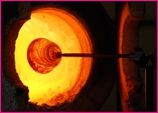 In this activity, elementary and middle school students learn about glass and the techniques for making it, especially glass blowing. Then, students experiment with honey to get a feel for how glass is blown, and butter, to learn how temperature changes affect a material.
In this activity, elementary and middle school students learn about glass and the techniques for making it, especially glass blowing. Then, students experiment with honey to get a feel for how glass is blown, and butter, to learn how temperature changes affect a material.
Read More
Filed under: Class Activities, Grades 6-8, Grades K-5 | Comments Off on Activity: Glass Blowing Simulation
Tags: Glass, Glass engineering, Lesson Plan
Posted on May 17th, 2010 by ASEE
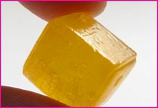 This lesson uses candy as a medium to illustrate the creation of glass, engaging students in three separate experiments as they predict, observe, and record the outcome of varying controls. The lesson is drawn from the curriculum “Contrasts: A Glass Primer,” developed by the Museum of Glass in Takoma, Washington, which aims to help students comprehend the medium of glass, while emphasizing oppositions in its creation, use, and aesthetics.
This lesson uses candy as a medium to illustrate the creation of glass, engaging students in three separate experiments as they predict, observe, and record the outcome of varying controls. The lesson is drawn from the curriculum “Contrasts: A Glass Primer,” developed by the Museum of Glass in Takoma, Washington, which aims to help students comprehend the medium of glass, while emphasizing oppositions in its creation, use, and aesthetics.
Read More
Filed under: Class Activities, Grades 6-8, Grades K-5 | 1 Comment »
Tags: Chemical Engineering, Crystal study, Glass engineering, Manufacturing Engineering
Posted on May 3rd, 2010 by ASEE
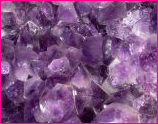 This activity from the Pacific Northwest National Laboratory involves students, grades 6-12, in the formation of crystals on glass slides. In conducting their experiment, students learn about basic principles that guide the work of materials engineers and scientists.
This activity from the Pacific Northwest National Laboratory involves students, grades 6-12, in the formation of crystals on glass slides. In conducting their experiment, students learn about basic principles that guide the work of materials engineers and scientists.
Read More
Filed under: Class Activities, Grades 6-8, Grades 9-12 | 1 Comment »
Tags: Chemical Engineering, Crystal study, Materials Engineering
Posted on May 3rd, 2010 by ASEE
 Using a plasma ball or lightning globe, students in grades 3-5 test various objects to see if they pull the electric current generated by the globe to them. Students then explore how the globe excited electrons inside the fluorescent bulbs to make them light.
Using a plasma ball or lightning globe, students in grades 3-5 test various objects to see if they pull the electric current generated by the globe to them. Students then explore how the globe excited electrons inside the fluorescent bulbs to make them light.
Read More
Filed under: Class Activities, Grades K-5, Grades K-5, Lesson Plans | Comments Off on Lesson Plan: Plasma Globes and Electricity
Tags: Class Activities, Curriculum, Grades 3-5, Lesson Plan, Plasma Physics
Posted on April 26th, 2010 by ASEE
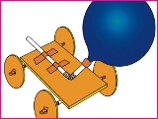 What more fun way to demonstrate Newton’s Third Law – every action has an equal and opposite reaction – than through a balloon-powered rocket car? In this lesson from NASA Quest, students grades 4-8 construct their cars from simple materials, test them along a measured track, then work to modify them for improved performance.
What more fun way to demonstrate Newton’s Third Law – every action has an equal and opposite reaction – than through a balloon-powered rocket car? In this lesson from NASA Quest, students grades 4-8 construct their cars from simple materials, test them along a measured track, then work to modify them for improved performance.
Read More
Filed under: Class Activities, Grades 6-8, Grades K-5 | 3 Comments »
Tags: NASA
 Visit the chemistry activity page from CSIRO — The Commonwealth Scientific and Industrial Research Organisation, Australia’s national science agency — to find simple, fun chemistry and physics projects for students. Other sections of this science Website offer information, videos, links, the Double Helix Science Club, and local resources for Australia teachers.
Visit the chemistry activity page from CSIRO — The Commonwealth Scientific and Industrial Research Organisation, Australia’s national science agency — to find simple, fun chemistry and physics projects for students. Other sections of this science Website offer information, videos, links, the Double Helix Science Club, and local resources for Australia teachers.








 Students grades 4-12 conduct a simple experiment that demonstrates how a familiar chemical — liquid soap — can be used to break the surface tension of water and propel a toy boat. Older students move into further inquiry of chemical dispersants and their use in combating oil spills.
Students grades 4-12 conduct a simple experiment that demonstrates how a familiar chemical — liquid soap — can be used to break the surface tension of water and propel a toy boat. Older students move into further inquiry of chemical dispersants and their use in combating oil spills. Do your students have what it takes to survive and be rescued? In this activity from Boston’s Museum of Science, student teams practice the design skills of engineers as they create survival tools from a crate of supplied materials. They learn about teamwork, brainstorming, innovation, and creative material reuse in attempting to create a protective shelter, a method for gathering food, and a signal for help. The teams test their designs for feasibility before having a design review with the rest of the class.
Do your students have what it takes to survive and be rescued? In this activity from Boston’s Museum of Science, student teams practice the design skills of engineers as they create survival tools from a crate of supplied materials. They learn about teamwork, brainstorming, innovation, and creative material reuse in attempting to create a protective shelter, a method for gathering food, and a signal for help. The teams test their designs for feasibility before having a design review with the rest of the class. This simple lesson from The Works Museum in Minnesota consists of two activities that introduce elementary school students to the engineering design process. Students first work through a chart detailing the steps of the design process and then use the steps to consider ways to solve one of three problems: rescuing a trapped kitten, devising a way to water plants while on vacation, and rigging up a remote light switch.
This simple lesson from The Works Museum in Minnesota consists of two activities that introduce elementary school students to the engineering design process. Students first work through a chart detailing the steps of the design process and then use the steps to consider ways to solve one of three problems: rescuing a trapped kitten, devising a way to water plants while on vacation, and rigging up a remote light switch. In this activity, elementary and middle school students learn about glass and the techniques for making it, especially glass blowing. Then, students experiment with honey to get a feel for how glass is blown, and butter, to learn how temperature changes affect a material.
In this activity, elementary and middle school students learn about glass and the techniques for making it, especially glass blowing. Then, students experiment with honey to get a feel for how glass is blown, and butter, to learn how temperature changes affect a material. This lesson uses candy as a medium to illustrate the creation of glass, engaging students in three separate experiments as they predict, observe, and record the outcome of varying controls. The lesson is drawn from the curriculum “Contrasts: A Glass Primer,” developed by the Museum of Glass in Takoma, Washington, which aims to help students comprehend the medium of glass, while emphasizing oppositions in its creation, use, and aesthetics.
This lesson uses candy as a medium to illustrate the creation of glass, engaging students in three separate experiments as they predict, observe, and record the outcome of varying controls. The lesson is drawn from the curriculum “Contrasts: A Glass Primer,” developed by the Museum of Glass in Takoma, Washington, which aims to help students comprehend the medium of glass, while emphasizing oppositions in its creation, use, and aesthetics. This activity from the Pacific Northwest National Laboratory involves students, grades 6-12, in the formation of crystals on glass slides. In conducting their experiment, students learn about basic principles that guide the work of materials engineers and scientists.
This activity from the Pacific Northwest National Laboratory involves students, grades 6-12, in the formation of crystals on glass slides. In conducting their experiment, students learn about basic principles that guide the work of materials engineers and scientists. Using a plasma ball or lightning globe, students in grades 3-5 test various objects to see if they pull the electric current generated by the globe to them. Students then explore how the globe excited electrons inside the fluorescent bulbs to make them light.
Using a plasma ball or lightning globe, students in grades 3-5 test various objects to see if they pull the electric current generated by the globe to them. Students then explore how the globe excited electrons inside the fluorescent bulbs to make them light. What more fun way to demonstrate Newton’s Third Law – every action has an equal and opposite reaction – than through a balloon-powered rocket car? In this lesson from NASA Quest, students grades 4-8 construct their cars from simple materials, test them along a measured track, then work to modify them for improved performance.
What more fun way to demonstrate Newton’s Third Law – every action has an equal and opposite reaction – than through a balloon-powered rocket car? In this lesson from NASA Quest, students grades 4-8 construct their cars from simple materials, test them along a measured track, then work to modify them for improved performance.